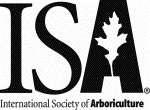
| Current Articles |
| Browse Archives |
| Search |
| Contact Us |
| AUF Home |
 |
Arboriculture & Urban Forestry Online
| Volume 22, Issue 2 —
March 1996
https://www.isa-arbor.com/Publications/Arboriculture-Urban-Forestry |
|
Effects of Ground-Based Applications of Soap, Bacillus Thuringiensis, Cyfluthrin, and Trunk Barriers on Gypsy Moth Density and Defoliation (View PDF) Kevin W. Thorpe Abstract: The combined effect of insecticide applications using hydraulic equipment and sticky trunk barriers was tested on individual white oak (Quercus atoajtrees under heavy gypsy moth (Lymantria dispar) pressure. The insecticides tested were insecticidal soap, Bacillus thuringiensis (B.t.), and cyfluthrin. One week after treatment, the B.t. and cyfluthrin treatments reduced larval density from 500 larvae per m2 of ground surface beneath the canopy on unsprayed, unbanded trees to 180 and 30 larvae per m2, respectively. Defoliation exceeded 75% on unsprayed, unbanded trees and unbanded trees sprayed with soap, but remained below 25% on trees sprayed with B.t. or cyfluthrin. Trunk barriers reduced larval density and defoliation under all insecticide treatments and on unsprayed trees, but their effect was minimal on trees treated with B.t. or cyfluthrin. None of the treatments affected the total number of gypsy moth egg masses on treated trees. These results indicate that ground-based applications of both B.t. and cyfluthrin can provide good foliage protection, but that the use of trunk barriers with these treatments provides little or no added benefit. The soap, which is a contact insecticide, did not provide adequate foliage protection. Keywords: |
Current Articles
| Browse Archives | Search | AUF Home | ISA Home
| Get Acrobat